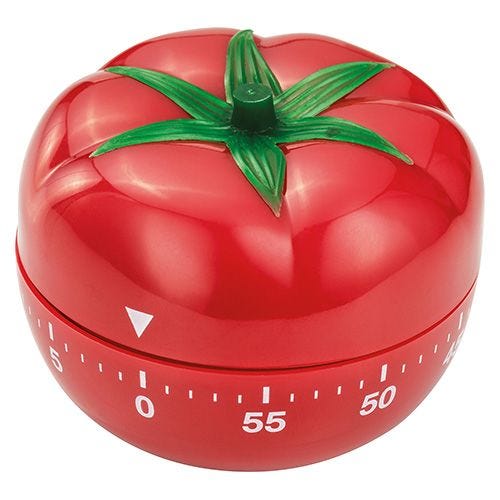#43: On thinking inside the box
How to embrace your limits and think creatively
Imagine being tasked with designing a new product or campaign for your organisation. Your boss tells you that money is no object, you can take as much time as you need, and you have the freedom to go in any direction you like.
It's a great opportunity, but instead of feeling excited, you feel a little paralysed.
Welcome to the paradox of choice—the idea that having too many options can incapacitate us, make us less happy, and reduce our life satisfaction. Even though this concept is well known, the dominant narrative about creativity is that it's all about dreaming big and acting as if there are no limits. Well, I disagree. In my experience, creative success means learning to embrace constraints.
I'm Sinéad 👋 I started out at a tiny (now bigger) breast cancer awareness charity called CoppaFeel!, where I helped shape an incredibly exciting brand that shouted much louder than its size. I recently moved to Media Trust, a non-profit that works with the media, creative, and tech industries to level the playing field for media representation in the UK. Having built a creative career in charities with small teams and smaller budgets, I've learned a lot about embracing limits. I'm taking over Pass It On this week to share my tips for finding and leveraging yours.
#1 Cut your budget
Let's start with money. When money is an object, experimentation becomes a necessity. By limiting options, a small budget forces you to focus on the crux of an idea. A solid strategy or a great story doesn't have to cost a lot. But no amount of money will help you retrofit a winning concept. So next time you're feeling stuck on an idea for a new product, campaign, or creative asset, bring it back to the basics. What would you do if you had a tenner to spend? What if you had one hundred? A grand? Can you develop a concept that supersedes its costs?
#2 Reduce your time
The second big limitation? Time. Nobody has enough of it, apparently. But if you've ever cleared your diary for a day of deep work and procrastinated through the first five hours, you'll know that breakthroughs often happen when you're up against it (ask me how I know). One trick is to constrain the delivery and work on your projects much closer to the deadline. If you give yourself a week to produce that new pitch deck, it will take a week. If you only have an afternoon, it will happen in an afternoon. Of course, there will often be reasons why you can't, or shouldn't, leave something to the last minute. But you can still replicate that 'up-against-it' feeling. Try a pomodoro timer and work in 25-minute chunks. You could use your phone, but experience tells me that a timer shaped like a little red tomato has a lot more charm and contains far fewer ingredients for distraction.
#3 Limit your options
Finally, plug into an existing framework. Here's a personal example. When leading creative output at CoppaFeel!, I was struck by the lack of diversity in stock breast cancer imagery. So I decided to design my own content series and translate CoppaFeel!'s health information into properly representative imagery. Great idea, except breast health information is extensive and can be varied. It was hard to know where to begin. As often happens when I'm stuck, I went back to basics. I created an A-Z of Boobs. As soon as I'd decided to work within the alphabet framework, it became easy to come up with ideas, letter-by-letter. You probably do this all the time without realising. If you've ever made a meme and shared it in the group chat, you've taken an existing framework and adapted it—it's how memes function.
I'm not alone in this opinion. James Joyce, one of the greatest writers of the 20th century, said:
'In the particular is contained the universal.'
He was right. We express universal truths best in very singular ideas. That's why great creatives see specificity as an aid, not an obstacle. And why brands like Apple, Crocs, and Moleskine have succeeded—by picking one thing and doing it brilliantly. They figure out their limitations and define themselves against them.
In reality, almost every project will come with intrinsic limits—time, money, or a strong creative brief (a good brief is, by definition, a well-thought-out set of constraints, affably rebranded as 'parameters'). And with a recession looming, most industries are getting ready to tighten their belts. But perhaps it's advantageous. Research shows that when resources are low, creativity is high. It's why the number of new startups boomed in the wake of the global financial crash in 2008. It's also why charities are so good at innovating.
Creativity doesn't exist in spite of limitations; it flourishes because of them. So next time you have a creative conundrum, compile your list of constraints and start thinking inside the box.



